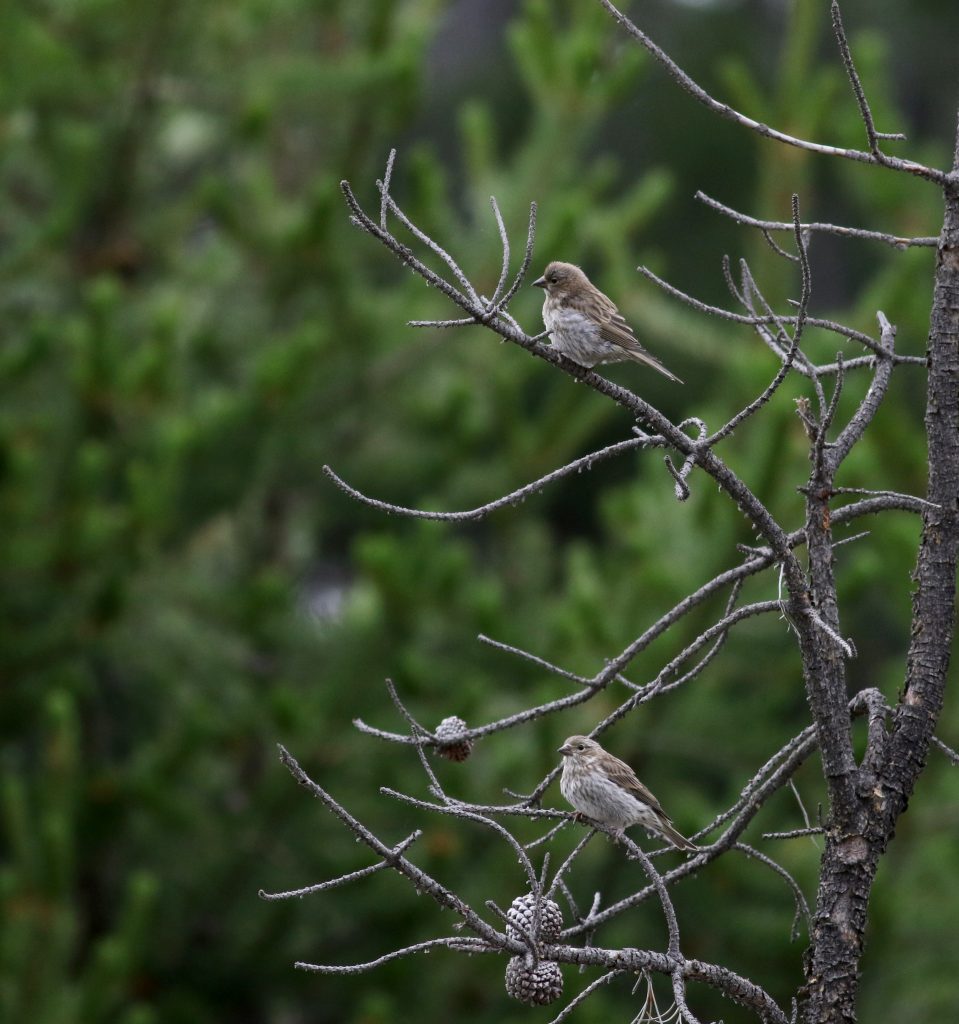By Matthew J. and Silvester Williams:
Last October (2019), we took a drive up to about 8,000’ in Wasatch County, Utah and found Cassin’s Finches frolicking in the already-snowy spruces as one might expect. This October, not far away but at about 6,000′, we had flocks of up to 30 Cassin’s Finches at our feeders! What’s going on here? More 2020 weirdness?
This Western montane species is “resident” (more later on this) at high elevations throughout much of the Western US but shows a seasonal migration up across the US border into British Columbia for the breeding season and down through New Mexico and Arizona, into Northern Mexico during winter. A 2017 paper in the Auk lists Cassin’s Finch among 163 altitudinal migrants. However, there are some other irruptive movements into low elevations and even into unexpected areas such as the western Great Plains.
These irruptions don’t really show up that well on range maps but by looking at some of the eBird data from October and November for the past few years, an interesting story unfolds.
You’ll notice that even though we’re only partway through November this year, there are already reports from central Kansas, Oklahoma and well into Texas. There are far more reports throughout the southern half of its range this year as well, suggesting that these finches are frequenting feeders (including ours in Utah) and more populated areas in 2020 like they did in 2017 — and even so far, this year’s eBird map looks even more impressive than the 2017 map!
Residential?
One other question that does not immediately jump out from the range maps or eBird data is whether or not the same individuals remain year-round or if they only appear to be “resident” simply because the species is present. With many species, the latter is more accurate.
A banding study from Cache County, Utah from the 1970’s sheds some light on this and found that there is some overlap. Accurately describing this species as “nomadic”, they found that some (but not all) individuals were actually present in the winter and breeding seasons.
Also interesting was the observation that “There were no Cassin’s Finches in this area in the winter of 1971-72, large numbers in 1972-73, smaller numbers in 1973-74, and none in 1974-75 (Samson 1977 and pers. obs.)”
Here researchers also cite food availability as a driver for wandering and breeding location selection. They even speculate that the feeders set up to conduct the research may have caused localized breeding in otherwise marginal habitat.
So, like nearly all the other irruptive finches, 2020-21 is shaping up to be very interesting for Cassin’s as well. Fill your sunflower seed feeders and get your sightings in eBird to let us know if and when Cassin’s show up. From recent, personal experience, identification of these Haemorhous finches can be tricky so it’s worth brushing up on your ID skills to increase your chances of picking out something very interesting like an “eastern” Purple Finch, which have irrupted throughout the eastern half of the country and have already shown up in Colorado, New Mexico and Arizona!
Photo Credits Jay McGowan
To read more about finches in the west, see this article on the irruptive Type 1 Evening Grosbeak.
FiRN is a nonprofit, and has been granted 501c3 status. FiRN is committed to researching and protecting these birds and other threatened finch species like the Evening Grosbeak and Rosy-finches, and if you have been enjoying all the blogs and identifying of Red Crossbill call types, redpoll subspecies and green morph Pine Siskins FiRN has helped with, please think about supporting our efforts and making a small donation at the donate link below.


About the Authors:
Matthew Williams is dad to Silvester and 3 others and husband to a supportive wife/bird-spotter. They live in Heber City, Utah (near Park City). He grew up in Western Massachusetts, and got deep into birding during his time at Cornell where he studied Environmental Engineering and was one of the “Matts”. His first Cassin’s Finches were seen at Tuolumne Meadows in Yosemite.
Silvester Williams (13) is an avid birdwatcher, eagle scout, mountain biker, XC skiier and photographer. He got his first eBird account when he was 7, and continues to grow his life list, now at 334. One of his greatest birding achievements was creating a Maryland yard list (in 3 years) with 120 species including Purple Finches and Siskins. He has been trying, perhaps a little to hard to will a Purple Finch into our yard in Utah.

